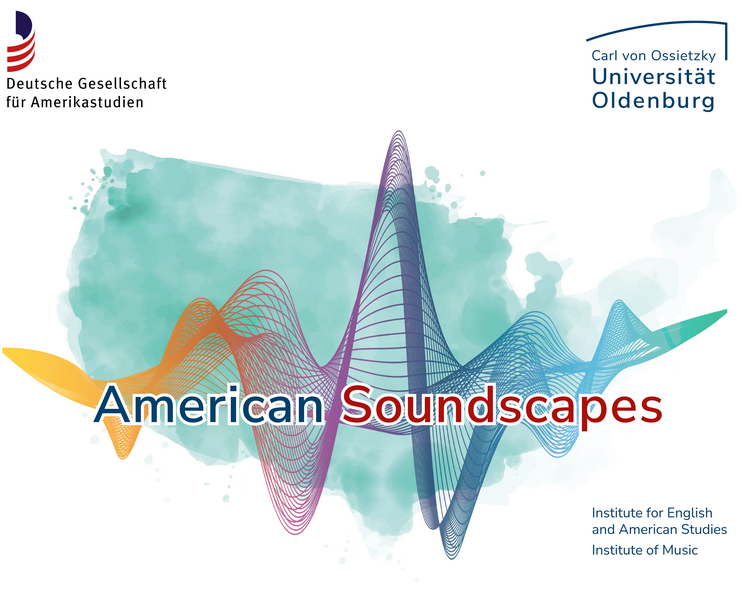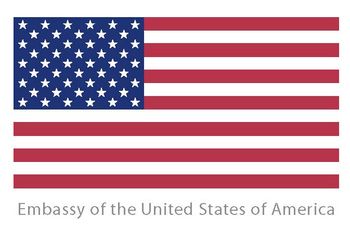DGfA | 70th Annual Meeting | 23-25 May 2024
Contact our Team
We’re looking forward to seeing you in Oldenburg!
If you have any questions do not hestiate to contact us at dgfa2024@uni-oldenburg.de .
DGfA | 70th Annual Meeting | 23-25 May 2024

“If any one wishes to be impressed with the soul-killing effects of slavery, let him go to Colonel Lloyd’s plantation, and, on allowance-day, place himself in the deep pine woods, and there let him, in silence, analyze the sounds that shall pass through the chambers of his soul,—and if he is not thus impressed, it will only be because ‘there is no flesh in his obdurate heart.’” (Frederick Douglass)
To Frederick Douglass, the question of listening – and of choosing not to listen – was ultimately a national one. According to him, the nation could be reconfigured through sound and music, which bore the unique potential to create affective bonds between people across racial and cultural differences. Yet, besides addressing the concrete cause of abolitionism, Douglass’ lines hint at an aspect of cultural production and perception that continues to mesmerize scholars from a variety of disciplines: How do the United States take shape acoustically in different historical and regional contexts? How do sound and music render identities and subject positions – both individual and collective? How do they address intersections of social and cultural (e.g. racial, gender, sexual) difference? On a different level, how does sound produce spaces, including urban, suburban, and rural spaces? To what extent do sounds and noise shape cultural and individual memories of certain historical periods? How are sounds remembered, stored, and archived? What are the (inter)medial constellations in and through which sounds and noises are dispersed, amplified, or muted? What are the technological, economic, and/or sociocultural preconditions under which something can be voiced or listened to in the first place? And how do we conceive of and approach constellations of silence within historically and regionally specific ‘regimes’ of sound and hearing?
The 70th Annual Meeting aims to shed light on American soundscapes in different historical and regional contexts and constellations. It sets out to explore the production and the perception of sounds and noises, their acoustic characteristics, material-technological conditions, their manifestation in other sign systems, as well as historically and culturally specific ways of hearing and listening. Accordingly, the Meeting’s panels may focus on music or song, but also other acoustic phenomena: video games, movie soundtracks, the voices of protest movements, the noises of industrial Detroit or the border regions in the Southwest, sonic environments in literary texts, the cultural implications of the sounds of American wildlife, the discourses on ‘noise pollution’ or the controversy on the potentials and risks of human enhancement through cochlea implants. Acoustic phenomena such as these lend themselves to explorations from a variety of disciplinary perspectives and to intense interdisciplinary conversation.
American soundscapes are both socio-culturally produced and socio-culturally productive, in that they are shaped in and by specific historical and regional contexts. At the same time, they have always been key in processes of meaning-making. The practice of ‘listening to the United States’ may thus facilitate a more nuanced understanding of American histories, societies, and cultures both within and beyond the United States. Accordingly, the Meeting’s panels may explore the following and other fields of inquiry:
- The potential of music and sound in processes of subjectivation and the production of orders of belonging and difference;
- The social/political/economic dimension of sound and the sonic dimension of the social/politics/economics;
- The uses of music in U.S. as well as transnational, social, cultural, political, and diplomatic history;
- The mutually constitutive intersection between sound and space/place;
- The technological conditions of producing, disseminating, archiving and listening to sounds and the sounds of technology;
- Historical sound sources as a means to approach history;
- The interplay between sound and other sign systems, e.g., in the ‘musicalization’ of fiction or in different audiovisual media;
- Cultural implications and constellations of (different types of) noise and silence;
- Discourses and practices of silencing, ‘regimes’ of sound and hearing and their exclusionary effects;
- Past and present “sound wars” within North America and beyond;
- New/alternative concepts, approaches, and methodologies for the historical and/or cultural analysis of sounds;
- Teaching US cultures and their histories through sound;
- Sonic literacy and the role of sound in educational settings.




